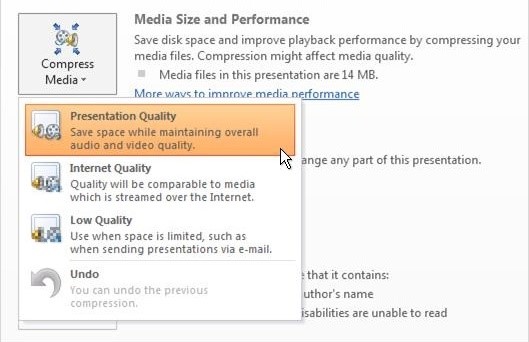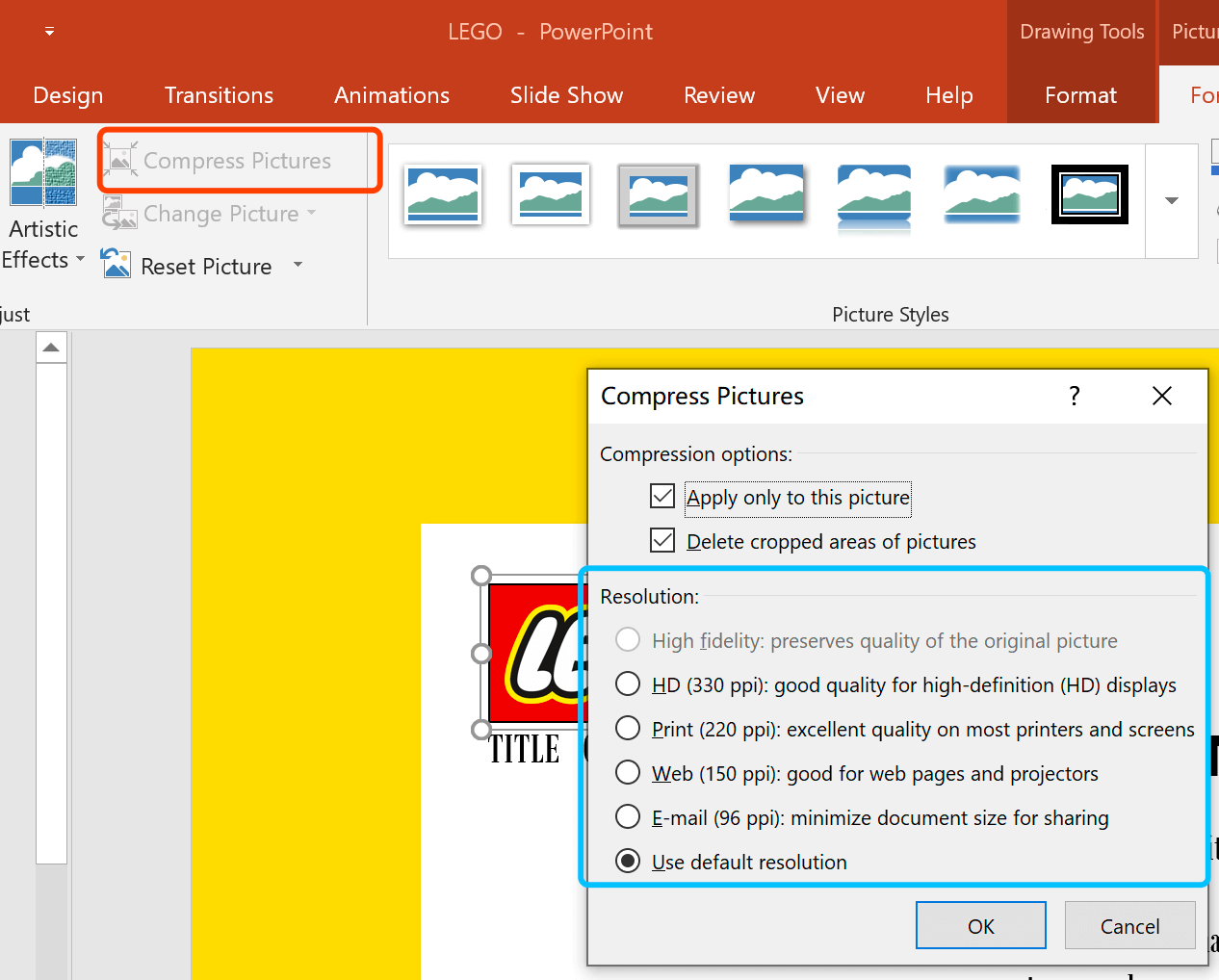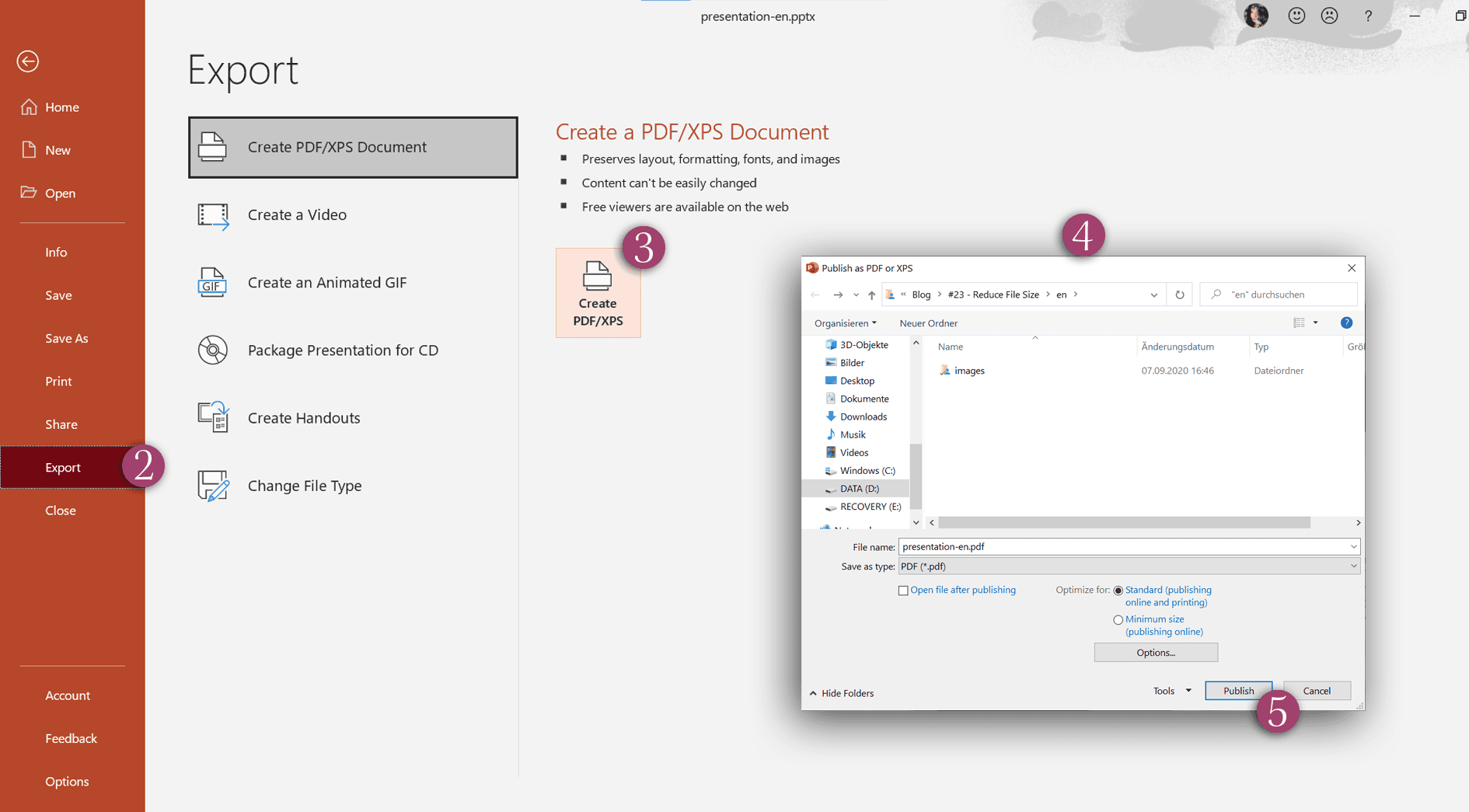

Once you have located the EMF file simply right-click on it and select copy (Ctrl+C), then right-click somewhere else on the page and choose the Paste as picture option (highlighted below).

Neither NXPowerLite or the Compress pictures feature in PowerPoint currently compress these images. Sometimes images are saved in PowerPoint as EMF files that can be very large indeed.
#Compress file size ppt how to#
To fix this you’ll need to export the image with effects as a JPG and reinsert it, deleting the version that’s there - we’ve written in more detail about how to shrink WDP files in PowerPoint. Compress pictures can reduce the PNG, and PowerPoint will regenerate the WDP file, but if your image started as a JPG then it might still be several times bigger than you’d like. It does this so it can apply the effects losslessly and revert them if you need. When you apply an artistic effect to an image, PowerPoint will create a WDP version and a PNG version of the image. There are two main reasons that the size of images might not reduce sufficiently using the methods above. What if the images don’t compress enough? In Explorer, go to the View menu and select the File name extensions check box. Make sure that you have Explorer set to show File name extensions. However, you do get an idea of what elements are the largest in your file.
#Compress file size ppt zip file#
This method isn’t for the faint-hearted, as it involves saving a copy of the file as a zip file and manually reviewing the extracted contents of the file. Method 1: Extract the file contents to a zip file Then you can use the most suitable approach to compressing the PowerPoint file (see How to edit PowerPoint content to reduce the size of a presentation below) and save yourself hours of time and energy.

Rather than wasting time guessing which methods to compress your PowerPoint file are most suitable, wouldn’t you like to be a little more precise and know exactly what is eating the space in your presentation?īelow are a couple of suggestions on how you can see the breakdown of content within your file so that you can pinpoint the offending (large) elements. (so you know the best approach to fixing the file size😉) How to find out what is making your PPT file so big UNUSED SLIDE MASTERS & LAYOUTS - Within your presentation, you can accumulate hidden or unused slide masters and layouts, which if discovered could be deleted to reduce file size. IMAGES - The most common reason for presentations to increase in file size with a vast amount of accepted file types, editing options and quirks.įONTS - Embedded fonts can be large, but do you really need them to be embedded?ĮMBEDDED CHARTS & OBJECTS - Can hugely increase file size depending on the size of the file being embedded.ĪUDIO OR VIDEO - Video files tend to be fairly big with HD & 4K video commonplace. What content inside PPTs can make the file size so large? Finally, we’ll talk about lots of useful techniques to reduce the size of your PowerPoint file. In this article, we’ll discuss each content type that can contribute to file bloat, and how to pinpoint the offending element. It stands to reason that if you know what elements are driving up the file size, reducing the size of a PowerPoint file is much easier! Both of these factors contribute to a large presentation file size. Also, PowerPoint is not always 100% focused on keeping the overall file size down and has some interesting quirks that can inflate the size unexpectedly. ”It could be the images” or “maybe it has an embedded video”, but until you know what specific elements are driving up the file size, you cannot apply the best solution to reduce the size of your presentation.Īs users add and edit content they do not generally know the consequences of their actions in terms of file size. When answering the question: “ So how do PowerPoint files get so big?”, most experts can talk in generalities about the cause of the issue. My PowerPoint presentation opens really slowlyĬollaboration is very slow and clunky with any large PowerPoint presentation I have to use a file transfer service to get a PPT file to my client

What is inside my PowerPoint that makes it so big? Large PPT files cause all sorts of common problems and you regularly hear the following user complaints:


 0 kommentar(er)
0 kommentar(er)
